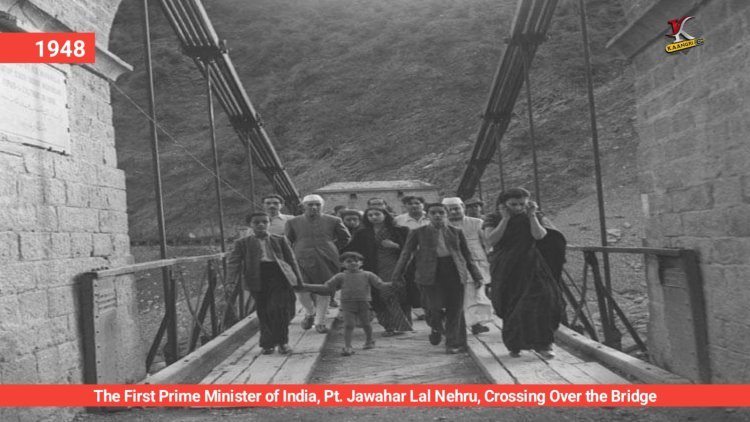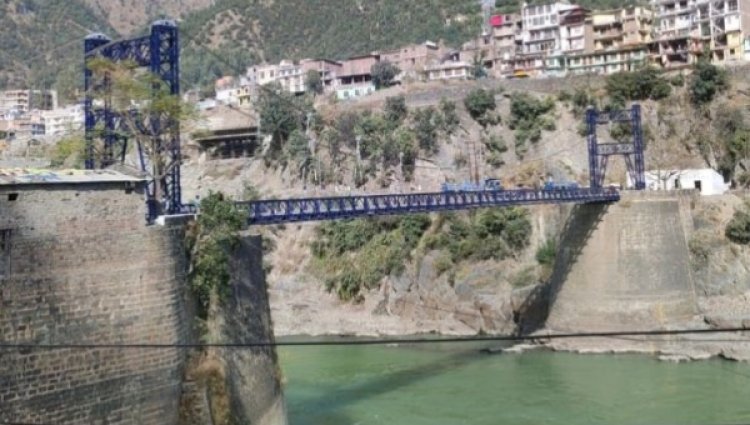Historical Ramban Suspension Bridge
Hey everyone, today I want to take you on a journey through time Ramban. Ramban is lactated on the National Highway (NH-44), (Jammu-Srinagar Highway), Jammu and Kashmir, India.
You might have traveled on the Jammu-Srinagar highway, one of the most adventurous roads in India. Long jams, shooting stones, landslides, snow, and mudslides were common issues. However, the construction of the four-lane highway has significantly improved the journey and travel time.
While there are still some under-construction spots that can be risky, especially during the rainy season, for those who traveled this route before the expansion, it's worth noting there was only one other road. This older road passes over the historical Ramban suspension bridge over the Chenab River, which still serves the public connecting Maitra, Gool, and Sangaldan areas with Ramban.
Ramban has a rich history, and one of the parts of that history is the Ramban Bridge. This bridge, built over the Chenab River, has been a crucial link between Jammu and Kashmir for over a century.
Also Read : Ghaura Gali: The Ancient Sculptural Marvels of Gool
The story starts back in the days of Maharaja Gulab Singh, who ruled Jammu and Kashmir. He wanted to develop a new route to travel to Kashmir, and so the Banihal Cart Road, or B.C. Road, was born. This road included a small wooden bridge at Ramban, which allowed people and goods to cross the Chenab.

This picture dates back to 1948. It shows India's first Prime Minister, Jawaharlal Nehru, crossing the Chenab bridge on foot.
Later, an even more impressive structure replaced the wooden bridge: a suspension bridge. But crossing the bridge wasn't as simple as driving over it. Back then, passengers had to get out of their vehicles and walk across the bridge on foot, while their vehicles were slowly driven across. Quite an adventure, wouldn't you say?
The suspension bridge served faithfully for many years, but eventually, a new era arrived. In the late 1960s, a more modern RCC bridge was built, which is the one we see in use today.
The story doesn't end there, though. In 2018, the old suspension bridge was declared unsafe for vehicles and was rebuilt. However, its legacy lives on, reminding us of the important role it played in connecting people and places. Just last year in 2022, the Border Road Organization (BRO) revamped it again! Engineers and the dedicated crew worked tirelessly to dismantle and then rebuild a brand new bailey suspension bridge, even completing it ahead of schedule. This new bridge can handle a single vehicle weighing up to 40 tonnes, and features a wooden deck for a smoother ride. This new bridge can handle a single vehicle weighing up to 40 tonnes, and features a wooden deck for a smoother ride.
105 metric tons of steel brought from Kolkata for the construction of a 240 feet long and 3.27 meters wide bridge over the Chenab River. The bridge has suspension at 12 locations. The total project cost was 4.77 crores out of which only 3.25 crores were spent on the construction of the bridge. The remaining expenses were incurred on other works. Now, around 2,000 to 3,000 vehicles cross over this bridge on a daily basis.
So, the next time you travel to Kashmir, take a moment to appreciate the bridges that has connected this beautiful region for so long. From the humble beginnings of the wooden bridge to the grand engineering feats of today, these structures stand as testaments to human ingenuity and the enduring spirit of connection.











